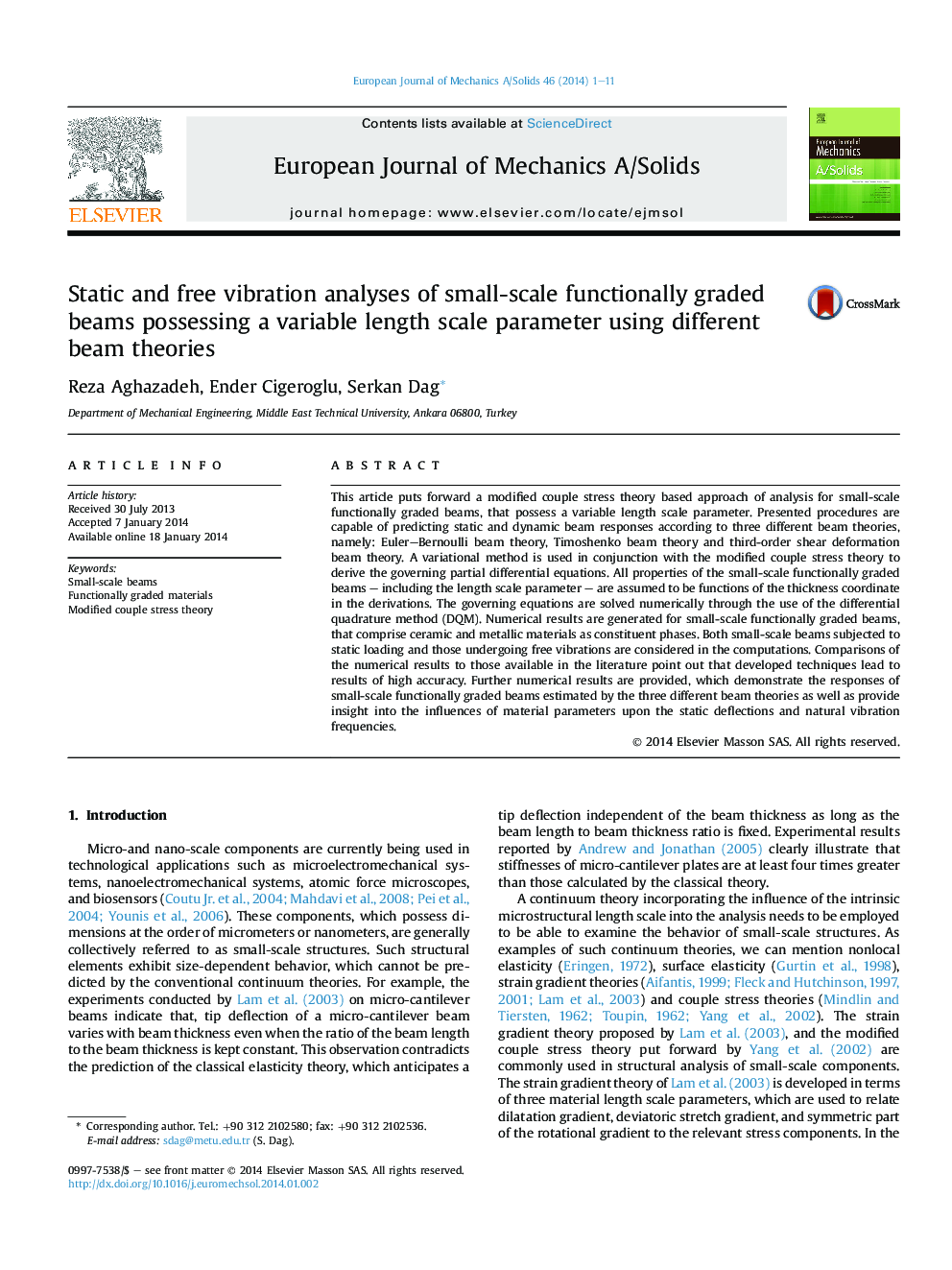| Article ID | Journal | Published Year | Pages | File Type |
|---|---|---|---|---|
| 774657 | European Journal of Mechanics - A/Solids | 2014 | 11 Pages |
•Small-scale FGM beams possessing a variable length scale parameter are examined.•Methods proposed are capable of predicting static and free vibration responses.•Modified couple stress approach is used in conjunction with three beam theories.•Variation of the length scale parameter is represented by means of rule of mixtures.•Results demonstrate the significance of the variation of the length scale parameter.
This article puts forward a modified couple stress theory based approach of analysis for small-scale functionally graded beams, that possess a variable length scale parameter. Presented procedures are capable of predicting static and dynamic beam responses according to three different beam theories, namely: Euler–Bernoulli beam theory, Timoshenko beam theory and third-order shear deformation beam theory. A variational method is used in conjunction with the modified couple stress theory to derive the governing partial differential equations. All properties of the small-scale functionally graded beams – including the length scale parameter – are assumed to be functions of the thickness coordinate in the derivations. The governing equations are solved numerically through the use of the differential quadrature method (DQM). Numerical results are generated for small-scale functionally graded beams, that comprise ceramic and metallic materials as constituent phases. Both small-scale beams subjected to static loading and those undergoing free vibrations are considered in the computations. Comparisons of the numerical results to those available in the literature point out that developed techniques lead to results of high accuracy. Further numerical results are provided, which demonstrate the responses of small-scale functionally graded beams estimated by the three different beam theories as well as provide insight into the influences of material parameters upon the static deflections and natural vibration frequencies.
